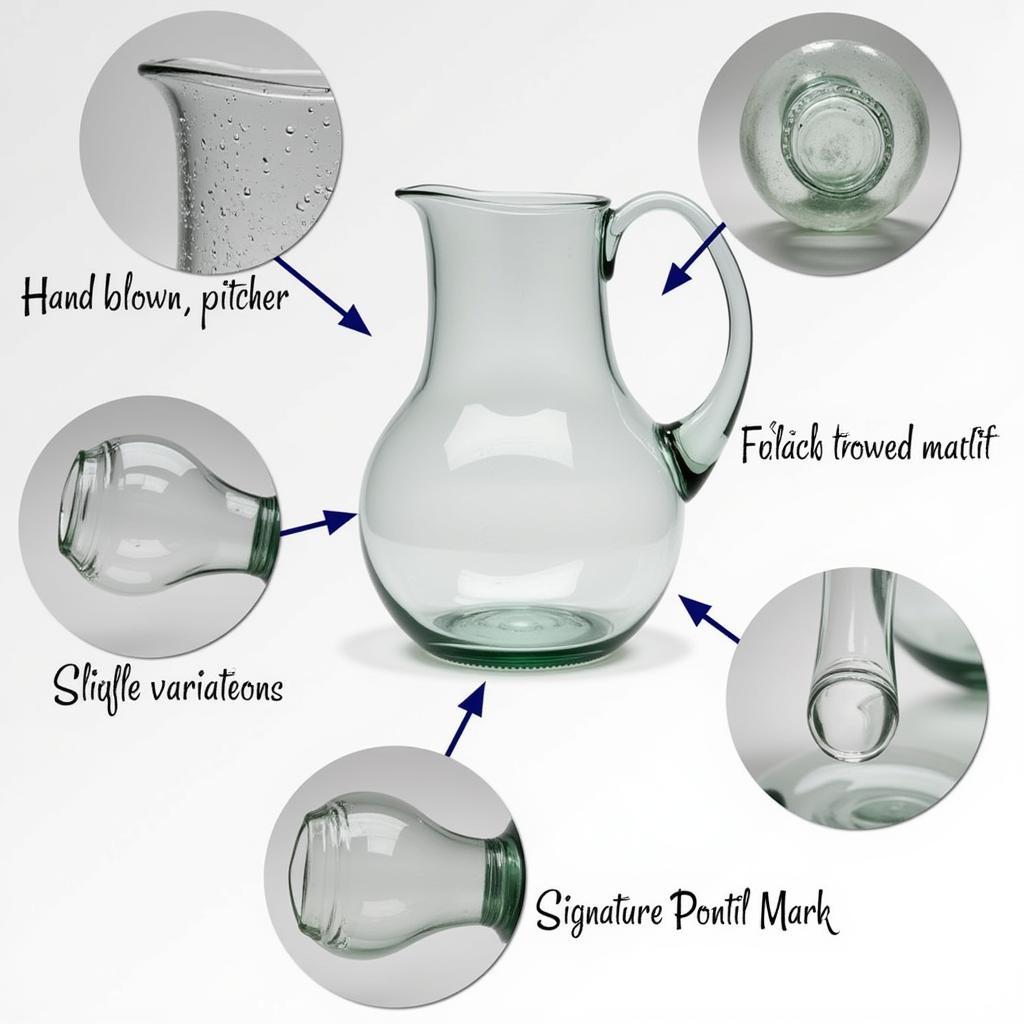Hand Blown Pitchers: A Guide to Artisan Craftsmanship
October 27, 2024Hand Blown Pitchers offer a unique blend of artistry and functionality. Unlike mass-produced options, these pitchers are individually crafted by skilled artisans using traditional glassblowing techniques. From the initial gathering of molten glass to the final shaping and cooling, each step leaves its mark on the finished product, resulting in a one-of-a-kind piece that showcases both the material’s beauty and the artisan’s expertise.
The Art of Hand Blown Glass
Hand blown glassmaking is an ancient practice dating back centuries. The process begins with carefully heating silica sand at incredibly high temperatures until it transforms into a molten, workable state. The artisan then gathers a glob of this molten glass on the end of a blowpipe, a long, hollow metal rod, and begins shaping the glass.
Using a combination of blowing air through the blowpipe, manipulating the glass with tools, and constantly rotating the pipe, the artisan gradually transforms the molten blob into the desired pitcher shape. This requires a high level of skill, precision, and an intuitive understanding of the glass’s behavior as it cools and solidifies.
Distinctive Qualities of Hand Blown Pitchers
 Unique Characteristics of a Hand Blown Pitcher
Unique Characteristics of a Hand Blown Pitcher
Hand blown pitchers possess a captivating charm and unique character rarely found in mass-produced glassware. Here are some key qualities that set them apart:
-
Organic Shapes and Variations: Each hand blown pitcher exhibits subtle variations in shape, size, and design, making every piece unique. These inconsistencies are a testament to the handmade nature and add to the piece’s artistic value.
-
Air Bubbles and Inclusions: Tiny air bubbles often become trapped within the glass during the blowing process. Far from being imperfections, these bubbles are considered desirable characteristics that enhance the visual appeal and demonstrate the hand-crafted nature.
-
Pontil Mark: When the pitcher is complete, it is detached from the blowpipe, leaving a small, polished mark on the base known as the pontil mark. This mark signifies authenticity and serves as a reminder of the artisan’s touch.
Choosing the Right Hand Blown Pitcher
Hand blown pitchers come in a wide array of styles, colors, and sizes to complement any table setting. Consider these factors when making your selection:
-
Style: From classic and elegant to modern and minimalist, there’s a hand blown pitcher to suit every aesthetic preference. Determine the style that best complements your existing tableware or creates the desired ambiance.
-
Size and Capacity: Consider how you plan to use the pitcher. Are you serving a crowd or just a few guests? Choose a size and capacity that aligns with your serving needs.
-
Color and Design: Hand blown glass can be infused with various colors and designs, allowing for endless creative possibilities. Opt for clear glass for a timeless look or explore vibrant hues and patterns to make a bold statement.
Caring for Your Hand Blown Pitcher
Hand blown pitchers are generally durable but require gentle care to preserve their beauty and integrity. Here are some tips to keep your pitcher in pristine condition:
-
Handwashing: While some hand blown glass is dishwasher safe, handwashing is always recommended to prevent accidental chips or cracks.
-
Gentle Cleaning: Use a mild detergent and soft sponge. Avoid abrasive cleaners or scrubbers that can scratch the surface.
-
Drying: Allow the pitcher to air dry completely or gently pat it dry with a soft cloth. Avoid twisting or applying excessive pressure when drying.
-
Storage: Store your hand blown pitcher in a safe and stable location, away from potential hazards that could cause it to tip over or break.
By following these simple care instructions, you can enjoy your hand blown pitcher for years to come, appreciating its beauty and craftsmanship with each use.